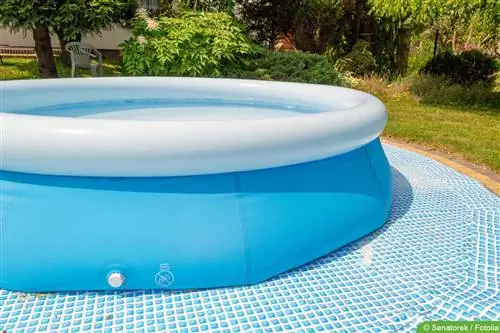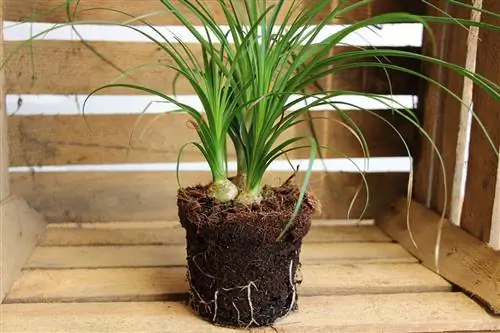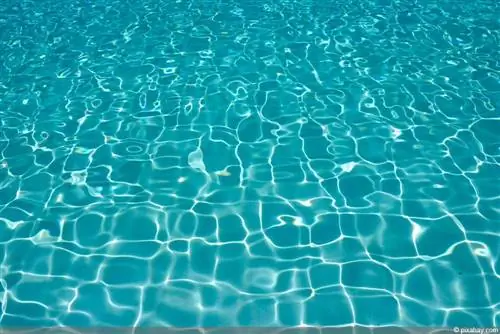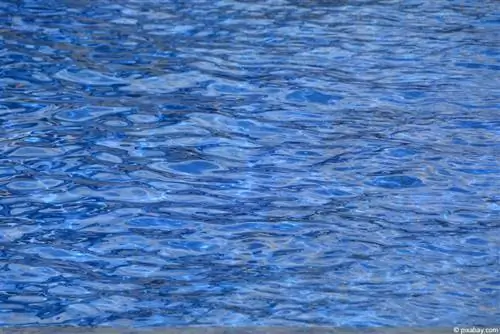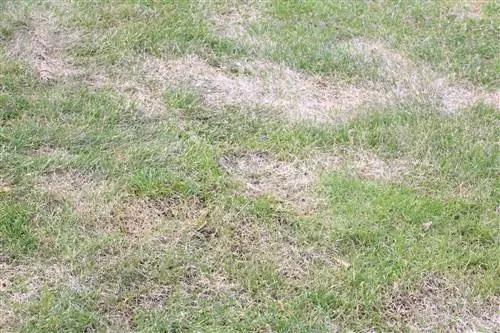- Author admin [email protected].
- Public 2023-12-17 03:39.
- Last modified 2025-01-24 12:45.
Several factors must be taken into account when building a pool base. Because placing a swimming pool directly on the lawn or just spreading out fleece can have unfavorable consequences.
Creating a substructure: reasons
The substructure of the pool plays a crucial role. Because it determines, among other things:
- the lifespan of the pool
- the safety of the garden
- the comfort of using the swimming pool
If the pool is not level, various potential problems arise. For example:
- overflowing water
- Pool tipping over
- Damage to the bottom of the pool
- uncomfortable bumps when walking in the swimming pool
- rotting grass under the pool
- Settlement of insects under the pool floor
It is therefore important that the substructure of the pool is constructed correctly. This applies to inflatable versions or smaller versions with a frame as well as to in-ground pools.
Demands on substructures
The pool substructure must meet various criteria. These include:
- Protect the bottom of the pool from damage
- form a level surface
- Protect soil
- Withstand the weight of the pool and water
- Provide stability
Various materials can be used for this. Others, however, are not suitable.
Lawn
Inflatable pools are often placed directly on the lawn. However, this has several disadvantages:
- Grass changes color and dies
- Rotting sets in
- Toxins spread through the substrate
- Insects, such as woodlice, are spreading
- small bumps and foreign bodies can cause damage
As a result, surrounding plants can die, the lawn has to be re-sown and the pools only have a short lifespan. Grass is therefore not suitable as a surface.
Note:
Very small and movable paddling pools can be placed directly on the lawn. However, it is important that they are only in the same place for a few days each.
Gravel and gravel
Gravel and gravel are wonderful bases for the swimming pool. However, this only applies as long as the materials are filled into an excavated foundation. There must also be additional cover or further protection between the subsurface and the bottom of the pool. These can be different substances.
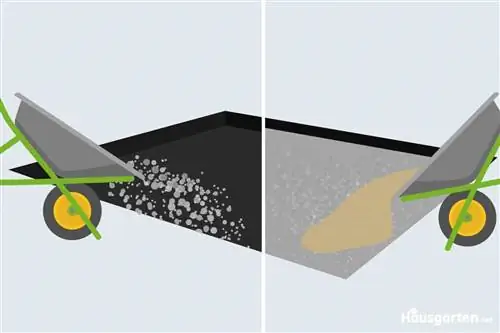
For example:
Sand
For very small and light pools, a small excavation as a foundation is completely sufficient. Grass and foreign bodies are removed and the earth is compacted, for example with a vibrating plate or a flat vibrator.
Afterwards, for example, gravel and gravel and then sand can be filled in. However, a simple layer of sand is sufficient. The benefits of sand include:
- low cost
- easy application
- quick compensation of unevenness
- improved drainage of water
- ideal as a base for plates
Note:
Quartz sand should definitely be used. This does not move so easily and offers a more stable base.
fleece
Garden fleece or more precisely weed fleece is a wonderful base for the pool. It prevents plants or their roots from drilling through other layers of the foundation from below as foreign bodies and causing damage to the swimming pool or the substructure.
However, the thin material does not protect against stones or existing roots or other foreign bodies. For this reason, it only makes sense as a sole base if the floor has already been prepared accordingly.
Tip:
Even with a solid, concrete or slab foundation, a layer of garden fleece is a wonderful addition. It provides additional protection and can prevent damage.
Records
Pavement slabs are available in various designs and are wonderfully suitable as a base. Common materials for them are:
- Styrodur
- Concrete
- Natural stone
Concrete and Styrodur are extremely cost-effective and wonderfully suitable for creating a base for the pool. Natural stones are more decorative, but also more expensive. In addition, they often prove to be rougher and therefore dangerous for the pool floor.
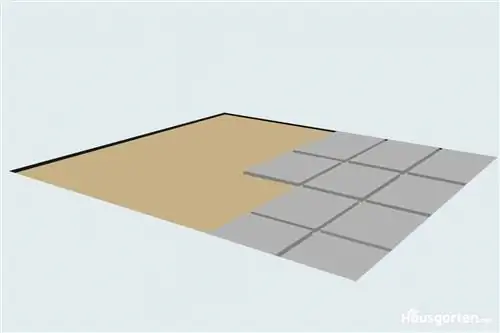
For these reasons, only variants that have been polished or glazed should be used. It must also be clear that usually only a small part of the panels will be visible. A layer of weed fleece is also recommended to prevent weeds from growing between or in the joints.
Building protection mats
Building protection mats are rubber mats that have cavities. It is vaguely reminiscent of a doormat and offers various advantages due to its structure and material. For example:
- low cost
- Recesses in the structure can be filled with, among other things, quartz sand
- The mats prevent the fine-grained materials from moving and spreading
- easy crop and adjust
As with the other materials, a building protection mat is not recommended as the sole base. Due to the cutouts in the mats, the bottom of the pool would be uneven and walking on it would be extremely uncomfortable. Nevertheless, they are a wonderful addition, especially for very flat foundations. They are therefore always worth using if:
- only loose materials such as gravel, gravel and quartz sand can be used
- the building protection mat serves as a cushion under panels
- an additional base is required for heavier cymbals
Since the mats can be easily removed again, they are particularly suitable for rented or leased gardens.
Concrete
If there is a permanent place for the pool in the garden, a corresponding solid foundation is also a good idea as a substructure. This can consist of gravel, gravel, sand and slabs with a fleece insert or can be concreted instead of the paving slabs.
This variant is more complex than, for example, laying out concrete slabs, but it is also more durable. Larger and therefore heavier pools should always be set up on such a foundation. In relation to the service life, the costs are low and the surface is also easy to clean.
Tip:
In leased gardens or on rented land, permission from the association or owner should be obtained before laying the permanent foundation. This is especially true on very small properties where water seepage must be ensured.
Recommendation: combined substructure
Although all cost-effective materials have advantages and disadvantages, they are often only really suitable as a substructure when combined. It is therefore recommended to use several layers and layers for both small and larger pools.
The structure and procedure could look like this:
1. Excavate foundation
Depending on the size of the pool, a foundation is dug with a spade or a mini excavator. The depth depends on the size and weight of the pool.
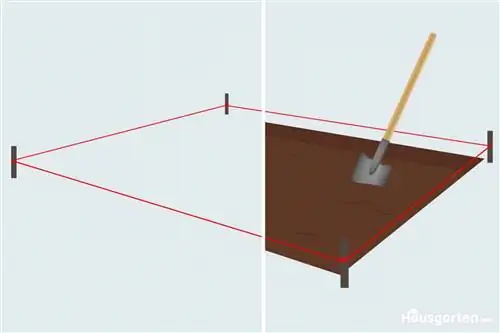
2. Compacting and leveling soil
For the pool to stand straight, the surface must be level. For this purpose, foreign bodies such as stones and roots must be removed and the soil must be compacted using a flat vibrator or a vibrating plate.
3. Lay out weed fleece
To prevent the growth of weeds and other plants and thus protect both the foundation and the bottom of the pool, weed fleece is laid out.
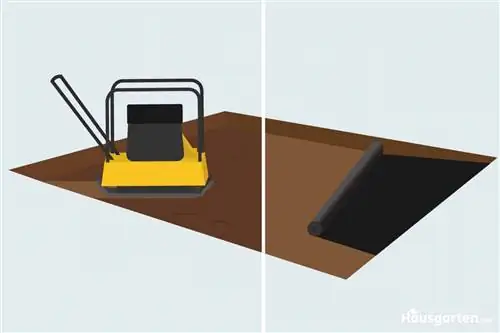
4. Filling and pouring
Building protection mats or directly gravel, gravel and quartz sand are filled and compacted in even layers.
5. Concreting
The foundation can either be concreted or pavement or Styrodur panels can be laid down.
6. Control
Check at every step whether the surface is level. The gradient may be a maximum of one percent. This means that there is a maximum height difference of one centimeter per meter.
Note:
The smaller and therefore lighter the swimming pool is, the flatter the foundation and the individual layers can be. 20 to 30 centimeters, or about a spade depth, is sufficient for the common sizes of above-ground pools.

